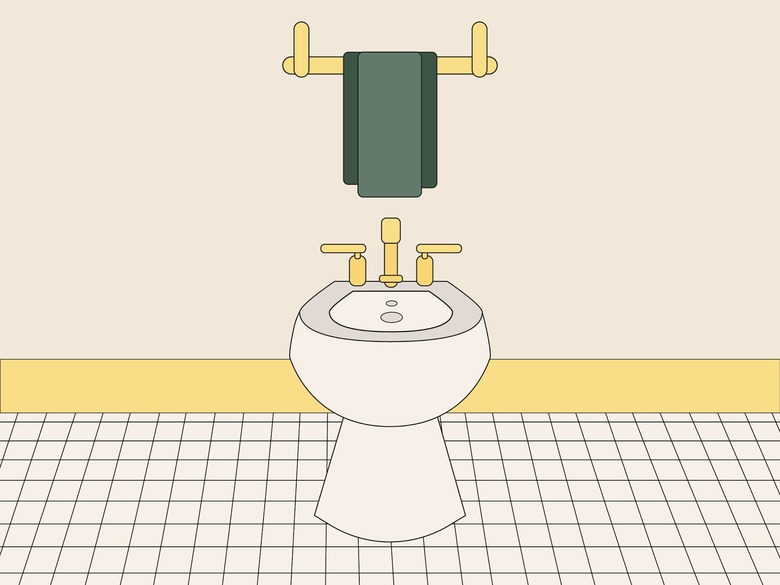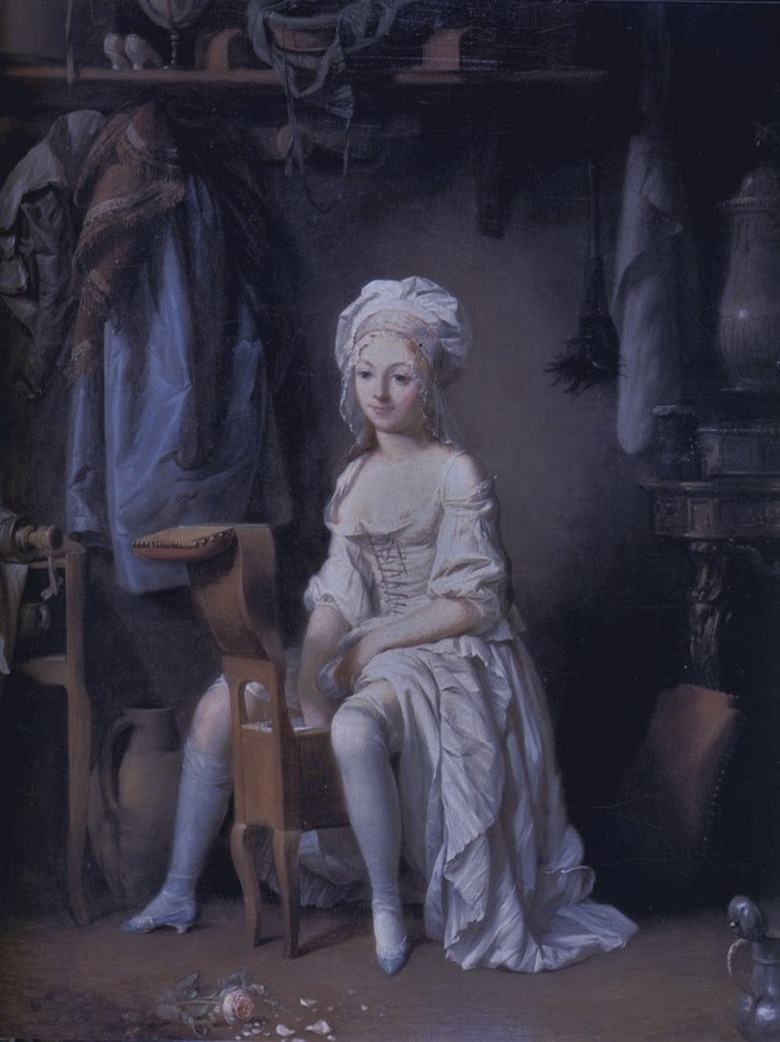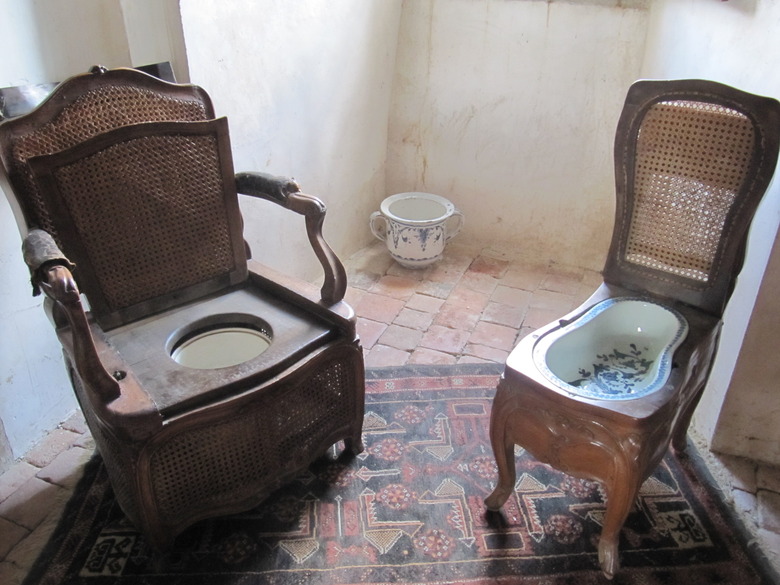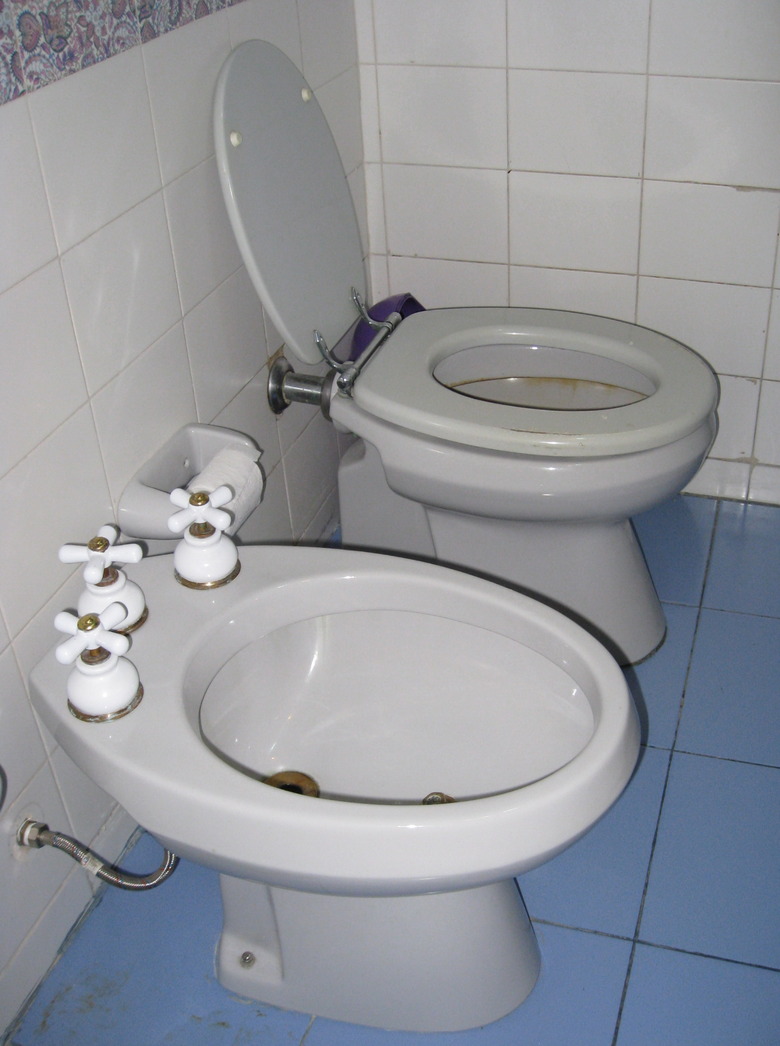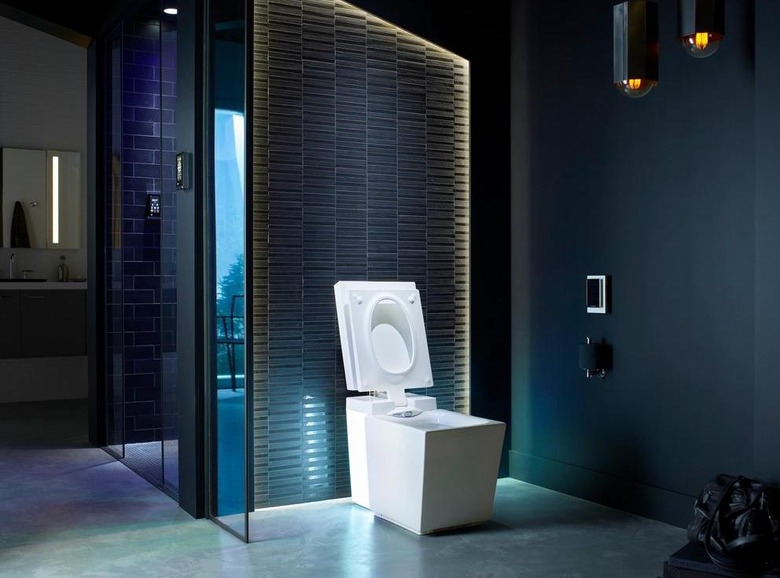The Upsetting Reason Why Bidets Are So Rare In The U.S.
We may receive a commission on purchases made from links.
If you're American and you have no idea what a bidet is, unfortunately, there's a specific reason why.
A bidet, according to the 1923 edition of Sanitary & Heating Engineering magazine, was described as a "small cabinet in which a basin is placed to be used for toilet purposes" by the French Encyclopédie Universelle. In Professor Alison K. Hoagland's The Bathroom: A Social History of Cleanliness and the Body, she gets more specific with the following definition: "[A] plumbed fixture designed for cleaning genital and anal areas." Yes, a bidet is essentially a mini shower, often placed next to the toilet, for your below-the-belt parts.
Who invented the bidet?
Who invented the bidet?
During the late 1600s to early 1700s, the bidet was born in France. Though the inventor is not known, on an archived page from the World Toilet Organization — a global non-profit dedicated to improving toilet and sanitation conditions — it states that royal furniture maker Christopher Des Rosiers is a contender. As for what it means, in his 2011 book No Sh*t: The History of Wiping, author Caleb Clark reveals that "bidet" is French for "pony" because one would straddle the fixture like they would a horse (and could also use it to clean their not-so-fresh undercarriage after riding one). When it was first established, the bidet was kept in the bedroom next to one's chamber pot.
Who used the bidet?
Who used the bidet?
In Europe, the bidet was seen as a key part of civilized living — especially by aristocrats. Bidet manufacturer Brondell writes that the bidet was originally a porcelain bowl housed in a wooden stand or chair. One would use their hand to scoop up the water in the bowl. Since royalty used the device, there were even bidets featuring carved wood and jewel accents. (The Cooper Hewitt Smithsonian Design Museum acquired one such bidet, designed by master cabinetmaker Noël J Baudin, in 1968.) Napoleon, for instance, left his son a silver-gilt bidet, which can be seen in a copy of his will on The Foundation Napoleon's history website.
Author Will Bashor, in his book Marie Antoinette's Darkest Days, reveals just how important the bidet was to polite society. Via France Today, he writes of Antoinette's imprisonment in a "fetid, dank dungeon," stating that, "A new bidet trimmed in red basane was also purchased for the queen." Though they kept her in an underground prison cell, leaving Marie Antoinette without a bidet would have been just plain cruel.
When was the bidet updated?
When was the bidet updated?
Progressing alongside society, the bidet received its first upgrade during the 18th century with a water pump and refillable tank. With the invention of indoor plumbing in the 1800s, the bidet then moved from the bedroom to the bathroom, becoming a small porcelain tub fitted with a faucet. However, even with these improvements, the bidet still couldn't catch a break in America — and that's all because of its association with the female body.
Why was the bidet problematic?
Why was the bidet problematic?
Vern L. Bullough's Encyclopedia of Birth Control reveals that bidets were often used by women for douching and thus, as a form of contraception. American soldiers experienced this firsthand while stationed in Europe during World War II. How Stuff Works reports that the troops began to associate bidets with sex work after they encountered them in brothel bathrooms. Between bidets being used as contraception and the fact that women could also use them to maintain cleanliness during menstruation, that was enough for the U.S. to associate the fixture with a lack of chastity. This, according to writer Maria Teresa Hart's Atlantic article "The Bidet's Revival," is what inhibited the device from becoming a staple in American bathrooms.
What else has the bidet been used for?
What else has the bidet been used for?
In Islamic countries, the bidet has very different connotations. Brondell notes that a bidet equipped with a handheld sprayer is popular in these locations because Islamic teachings recommend water as a way to purify the body. Before the invention of the bidet, and still today, according to Salon's Wajahat Ali, Muslims would use a vessel called the lota for this type of cleansing.
Still holding out hope for the bidet in the United States, American Bidet Company founder Arnold Cohen tried to integrate the bidet into the country's lifestyle. He did so specifically for his ill father, since studies have positively correlated healing irritations, such as rashes and hemorrhoids, with bidet use. (Note: Bidets are not a replacement for a physician's treatment.) His invention was also inspired by the sitz bath, which Healthline describes as a warm, shallow bath that one can use to cleanse their bottom half as it relieves itching, minor pain, and irritation. What Cohen ended up creating was a toilet seat outfitted with a spritzing option — but even this more subtle bidet still didn't sit right with U.S. residents.
What are modern-day bidets like?
What are modern-day bidets like?
Fortunately, Cohen took his invention over to Japanese trading company Nichimen Jitsugyo, where they developed their own version. Later on, in 1980, Japanese company Toto would build the Washlet, a popular control panel-based bidet that also functions as a toilet. Between Toto and Cohen, we now have our modern bidet, which is a lot more high-tech than the wooden version of the past. Today, bidets can even allow us to control water temperature, pressure, and direction. Brondell explains that there are also smart bidets with Bluetooth capabilities and user memory settings.
With the evolution of the bidet in mind, next time you spot one, take a moment to pretend you're royalty.
